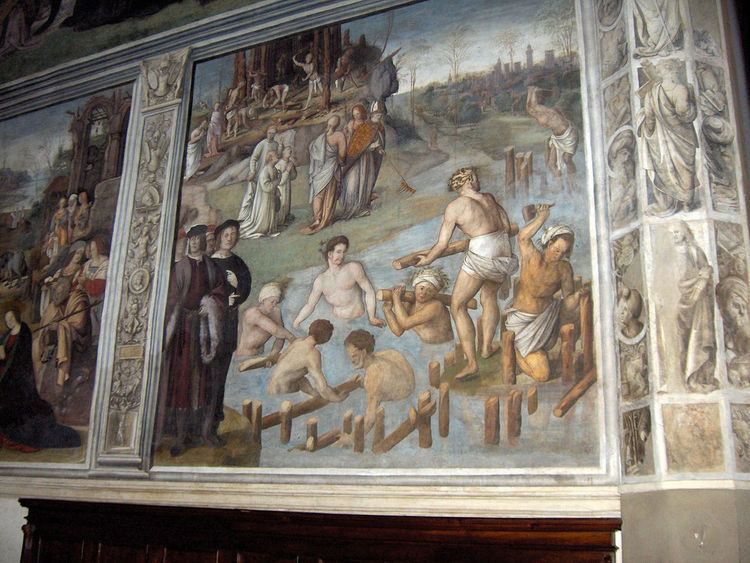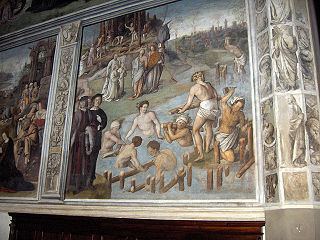Died 588 AD, Italy Name Fridianus Fridianus | Feast March 18 Canonized Pre-Congregation | |
 | ||
People also search for Theonistus, Paola Renata Carboni | ||
Venerated in Roman Catholic Church | ||
Basilica of San Frediano, Lucca, Tuscany, Italy, Europe
Saint Fridianus (Italian: San Frediano, also Frigidanus, Frigidian, Frigianu), was an Irish prince and hermit, fl. 6th century. Tradition names him as a son of King Ultach of Ulster. He later became Bishop of Lucca in Italy. The Basilica of San Frediano in the city is dedicated to him.
Contents

Biography
Fridianus is venerated as a Christian saint of the 6th century and as a bishop of Lucca. The Basilica di San Frediano in Lucca is dedicated to him.
Tradition makes him a prince of Ireland who became a hermit on Mount Pisano, near Lucca, after going on pilgrimage to Rome. The Catholic Encyclopedia states: “Remarkable for sanctity and miracles was St. Fridianus (560-88), son of Ultonius, King of Ireland, or perhaps of a king of Ulster (Ultonia)... .”
According to his legend, Fridianus was brought up trained in Irish monasticism, and was taught by St Enda and St Colman. He was later ordained a priest. Upon a pilgrimage to Italy, he decided to dedicate his life to God in solitude, and became a hermit, living on Mount Pisano near the city of Lucca. In 556, Pope John II persuaded him to take the bishopric of Lucca, which Fridianus accepted. However, he would often return to countryside to spend his time in quiet prayer and solitude.
Fridianus became known for working miracles, his most famous one almost certainly being a legend. The River Serchio, which ran past Lucca, often broke its banks and flooded the nearby city. The citizens became so distressed by this that they called for their bishop to come to their aid. Armed with a rake, Fridianus walked down to the river bank, and, strengthened by the prayers of the faithful, he commanded the waters of the Serchio to follow his rake. To the amazement of those gathered, the river followed Fridianus as he cut a path away from the city and the cultivated land on its outskirts.
During his episcopate, Lucca was attacked by the Lombards. The cathedral was burnt down and Fridianus rebuilt it. He may also have founded a group of eremitical canon priests; these canons merged with the Canons Regular of the Lateran in 1507.
Fridianus had a church built on the spot of the present basilica, dedicated to St. Vincent, a martyr from Zaragoza, Spain. When Fridianus was buried in this church, the church was renamed Ss. Frediano and Vincenzo. The church is now a major landmark for people to visit.
St. Fridianus is often confused with St. Finnian of Moville, although no formal connection has ever been made between the two.
